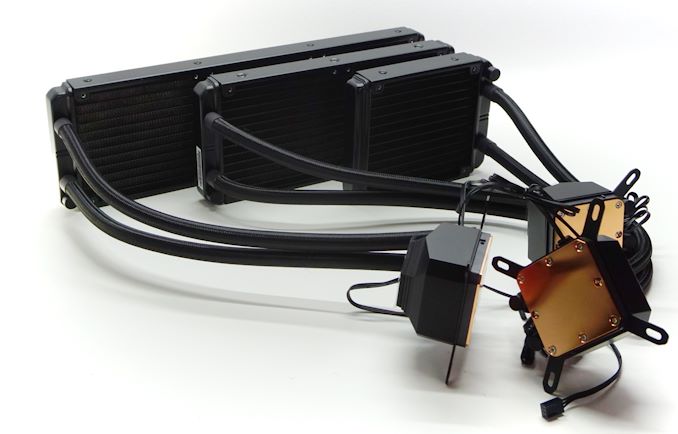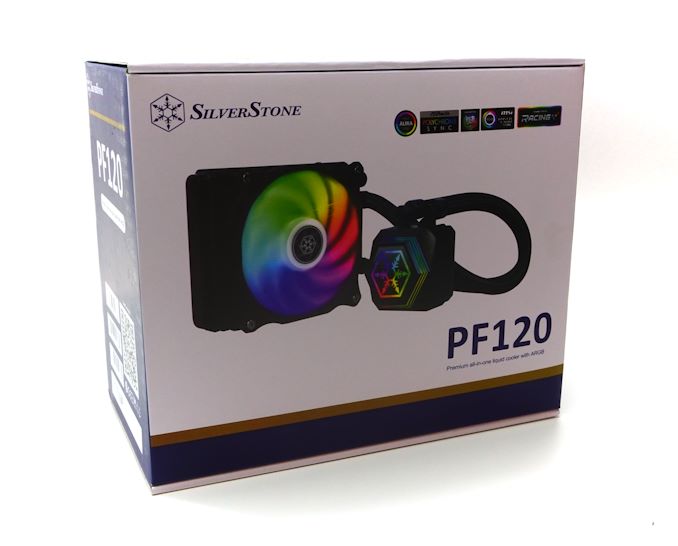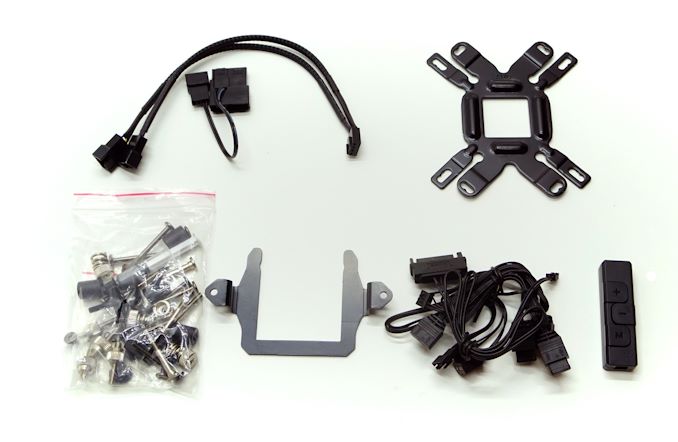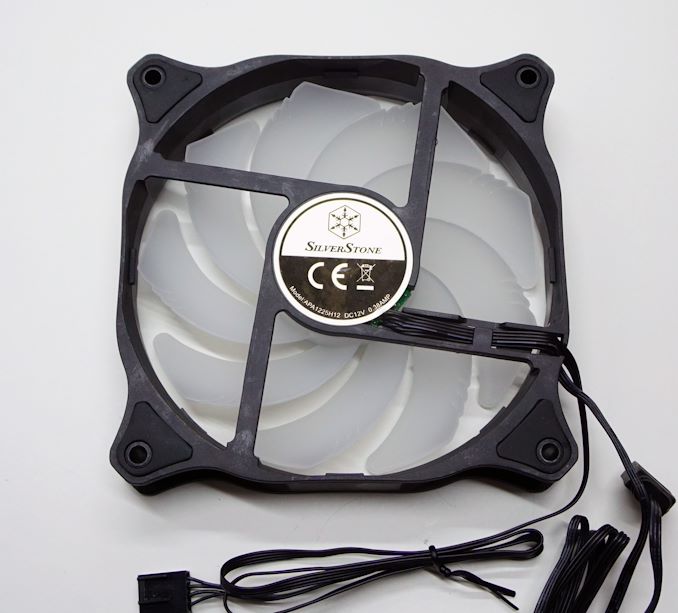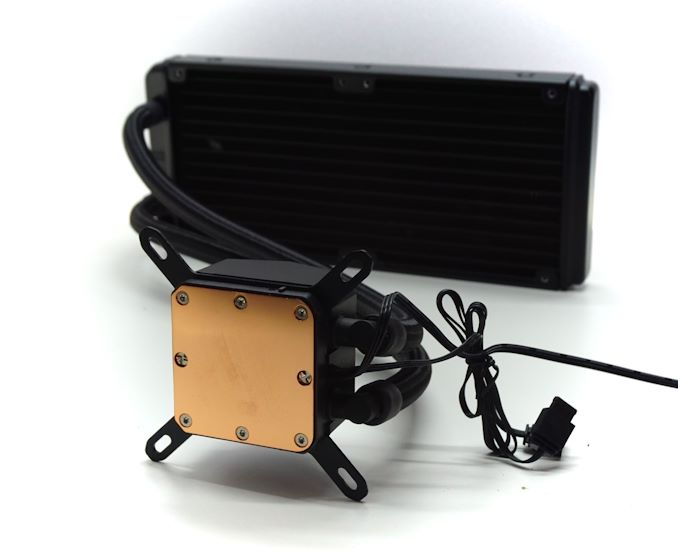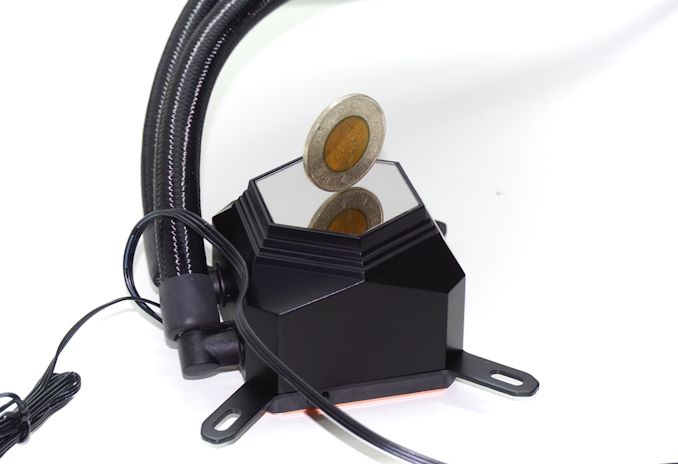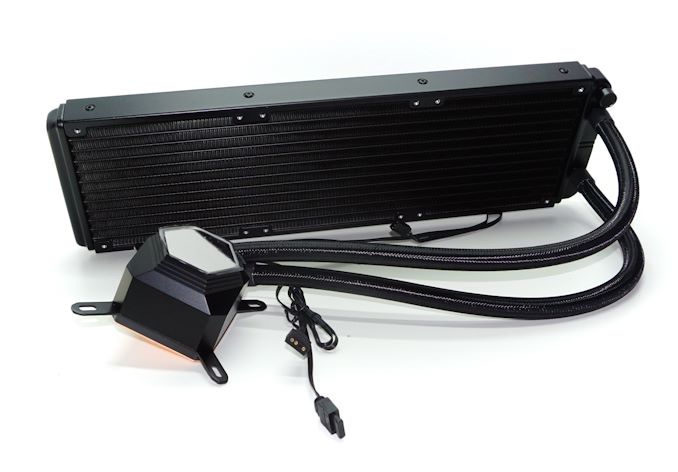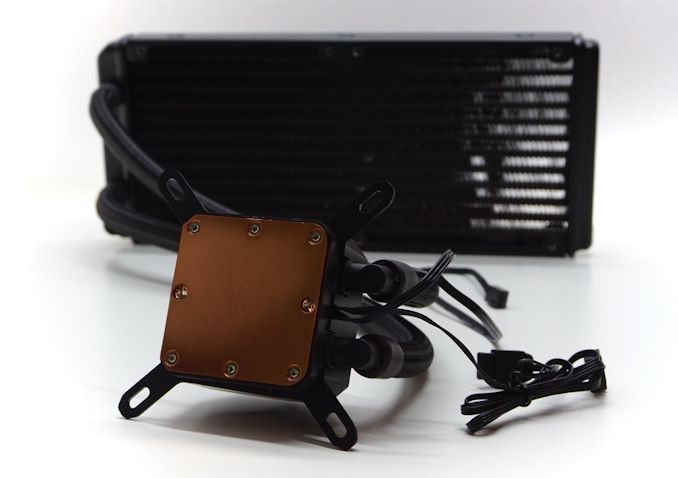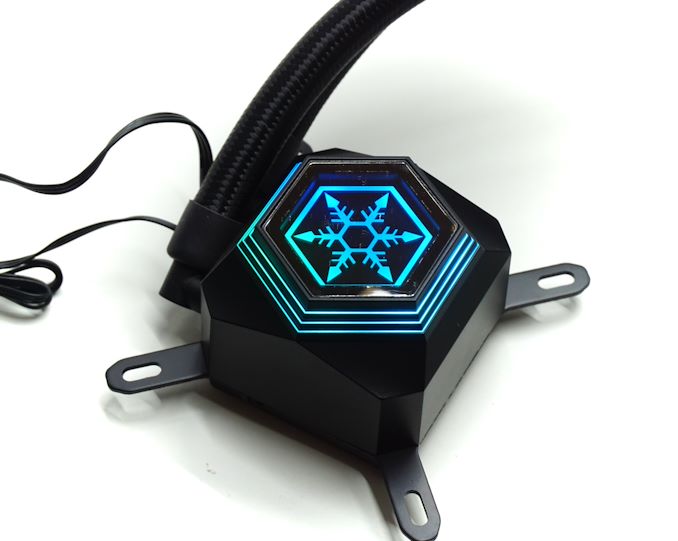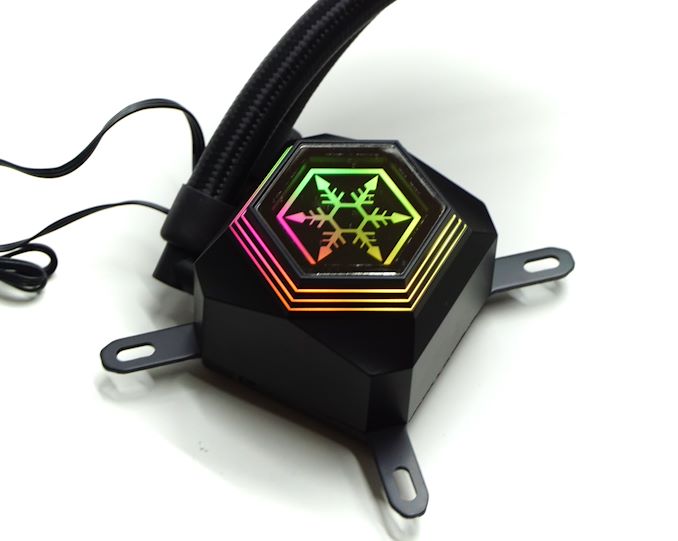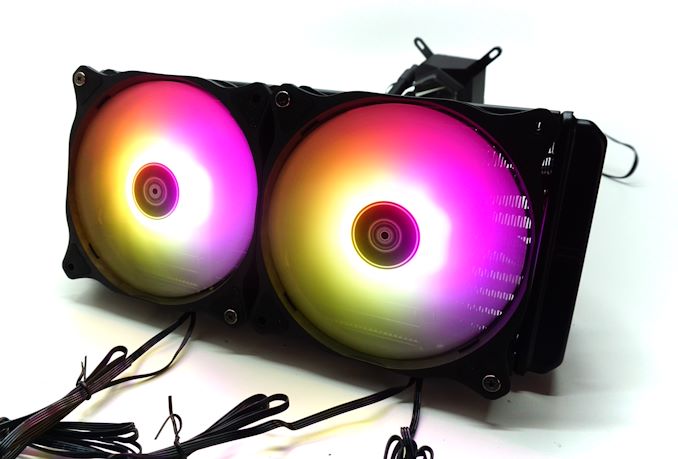
Original Link: https://www.anandtech.com/show/15852/the-silverstone-permafrost-pf120-pf240-pf360-argb-aio-coolers-review
The SilverStone Permafrost PF120, PF240, and PF360 ARGB AIO Coolers Review
by E. Fylladitakis on June 17, 2020 10:00 AM EST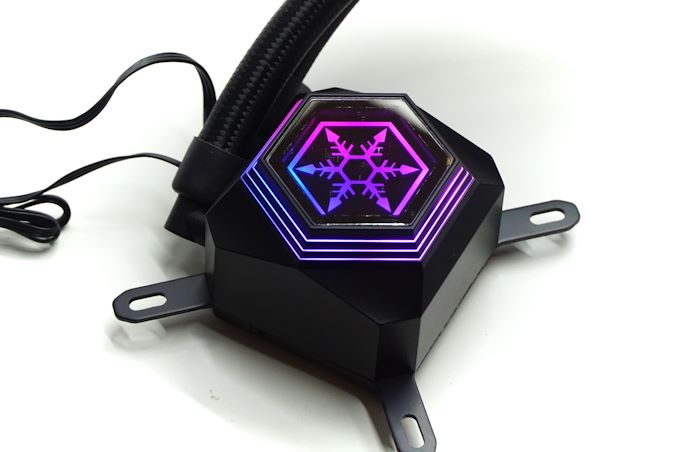
SilverStone is a well-known name amongst advanced users and enthusiasts. The company earned its reputation from its first PSUs and original case designs, and soon diversified towards cooling related products. Their products usually are designed to be cost-effective, with a focus on practicality and quality instead of extravagant aesthetics. That tactic served SilverStone very well in the past, some of their CPU tower coolers have become very good values for the price.
Given SilverStone's success with air coolers, today we are switching tracks to liquid coolers and taking a look at SilverStone’s latest all-in-one (AIO) “Permafrost” cooler series. With multiple models covering the most popular cooler sizes, SilverStone is looking to tap into what has continued to be a popular market for alternative high-performance coolers. And with the inclusion of Addressable RGB (ARGB) lighting, SilverStone is perhaps bowing to a bit to market pressures as well by including RGB lighting in their new AIO coolers.
Altogether, SilverStone has released three Permafrost ARGB AIO coolers: the PF120, PF240, and PF360. As their names suggest, they are designed with radiators that use one, two, or three 120 mm cooling fans respectively. And for today's review, we're going to be looking at all three models.
| SilverStone Permafrost Coolers | |||||
| PF360-ARGB | PF240-ARGB | PF120-ARGB | |||
| Size | 360mm x 120mm | 240mm x 120mm | 120mm x 120mm | ||
| Fan Thickness | 25mm | ||||
| Radiator Thickness | 28mm | ||||
| Fan Noise (Rated) | 7.4 - 35.6 dBA | ||||
| Tube Length | 400mm | ||||
| MSRP | $129.99 | $99.99 | $79.99 | ||
As mentioned previously, all three coolers also incorporate RGB lighting. With RGB being the latest industry trend and considering the significant market slice that it currently holds, it seems that SilverStone could not afford to not have RGB-related products available. Thankfully, however, unlike so many vendors, SilverStone isn't treating the inclusion of RGB lighting at a justification for charging high prices. So while these new coolers aren't budget products by any means, their retail price is not forbidding, making them an enticing option for enthusiasts that wish to combine aesthetics and performance while on a budget.
Packaging & Bundle
SilverStone supplies their new Permafrost series coolers in sturdy cardboard boxes that, along with the internal custom inserts, provide excellent shipping protection. The artwork on the packaging is simplistic, focused on pictures of the coolers themselves – still, that is more than enough for catching the eyes of shop shelf browsers.
All three coolers share the exact same bundle, with the sole exception being the number of fans and their wiring. Inside the box, we found the necessary mounting hardware, a small syringe with thermal paste, the necessary power and LED wiring, and an ARGB lighting controller.
Meanwhile the ARGB LEDs of all three coolers are compatible with most motherboards featuring controllable RGB lighting. On compatible systems, the LED wiring of the AIO cooler can be attached directly to the motherboard, which directly controls the RGB lighting of the cooler via the software each motherboard manufacturer provides.
And while SilverStone does include a stand-alone ARGB controller as well, it's really meant to be used as a fallback option – to manually setup lighting effects with systems that do not have a compatible motherboard. It features several pre-programmed RGB lighting effects, as well as speed and brightness options, but it certainly is not convenient to open up the case each time one wants to change any lighting setting. These coolers are definitely meant to be used with compatible motherboards, where the control is performed via software.
Depending on the version of the SilverStone PF ARGB cooler, you will receive one, two, or three 120 mm fans for their radiator. SilverStone supplies their APA1225H12 fans, which are identical to the Air Blazer 120 fan that the company markets as a stand-alone item. These fans feature a Hydro bearing engine for low noise and anti-vibration mounting pads. The nine narrow fins suggest that the fan is designed for high flow and low pressure, which should be fine considering the relatively thin radiators.
The SilverStone Permafrost Series AIO Coolers
Aside from the obvious difference of a larger radiator, all three versions of the Permafrost cooler are practically identical. The core design of the coolers is the typical AIO configuration of a single radiator, two hoses, and a block that combines the CPU contact plate and a miniature liquid pump. The designer went with standard rubber tubes with external nylon sleeve braiding for additional protection, which are fixed on the radiator and partially adjustable (just a couple dozen degrees sideways) on the CPU block.
SilverStone focused their design efforts on the main block assembly. The company installed a three-phase engine pump and an AEC-Q100 sine wave generator, increasing the efficiency and lowering the noise output of the pump itself. The AEC-Q100 is certified by the Automotive Electronics Council, thus SilverStone is marketing it as an “automotive grade” generator. We can only agree that it is a high-quality part. The designer also installed a micro-channel copper block and made sure to thermally separate the input and output in order to prevent heat creeping.
The top part of the main block assembly is a real acrylic mirror that hides RGB LEDs. Once lit, the LEDs form SilverStone’s logo on the mirror. The user can adjust the lighting effects, colors, speed, etc., but cannot change the illuminated shape in any way.
SilverStone also claims that their radiators are “automotive grade”. That may be accurate regarding the corrosion protection and/or the material of the radiator. In terms of size, however, even the largest 360 radiator cannot be used as a cooling radiator in any kind of car – it hardly has the mass to be used as a heater core in a very small car. Though this is of no real concern to us, as the Permafrost is going to be used to cool PC processors, not a combustion engine.
On topic, the radiators are typical dual pass cross-flow designs, with tiny fins soldered on thin oblong tubes. This is by far the most dominant radiator design for AIO systems and rightfully so, as it offers the best efficiency within limited proportions and for the temperature differences that AIO coolers have to deal with. The radiators are just 26 mm thick, meaning that the entire assembly with the fans requires only 51 mm of clearance, maximizing compatibility.
The bottom of the main block assembly reveals a sizable, square cooper block. It is neither nickel-plated or polished down to a mirror finish, yet the finish is very smooth and free of imperfections. Do note, however, that these coolers are meant for mainstream desktop processors rather than large HEDT processors; so the contact plate is not large enough to cover Ryzen Threadripper processors and SilverStone does not provide hardware to install any Permafrost cooler onto a TR4 socket.
SilverStone’s application of RGB lighting on the cooling fans is exceptional. The designer placed the LEDs into the fan’s engine, creating a fantastic diffusion visual effect on the fan’s semi-transparent blades. If connected to a compatible motherboard, both the fans and the main block will copy the programmed lighting theme of the system. For those who do not own a compatible motherboard or just do not want to have lighting synergy between different parts, the lighting effects can be programmed from the wired controller, meaning that the user will have to open the case in order to access it.
Testing Methodology
Although the testing of a cooler appears to be a simple task, that could not be much further from the truth. Proper thermal testing cannot be performed with a cooler mounted on a single chip, for multiple reasons. Some of these reasons include the instability of the thermal load and the inability to fully control and or monitor it, as well as the inaccuracy of the chip-integrated sensors. It is also impossible to compare results taken on different chips, let alone entirely different systems, which is a great problem when testing computer coolers, as the hardware changes every several months. Finally, testing a cooler on a typical system prevents the tester from assessing the most vital characteristic of a cooler, its absolute thermal resistance.
The absolute thermal resistance defines the absolute performance of a heatsink by indicating the temperature rise per unit of power, in our case in degrees Celsius per Watt (°C/W). In layman's terms, if the thermal resistance of a heatsink is known, the user can assess the highest possible temperature rise of a chip over ambient by simply multiplying the maximum thermal design power (TDP) rating of the chip with it. Extracting the absolute thermal resistance of a cooler however is no simple task, as the load has to be perfectly even, steady and variable, as the thermal resistance also varies depending on the magnitude of the thermal load. Therefore, even if it would be possible to assess the thermal resistance of a cooler while it is mounted on a working chip, it would not suffice, as a large change of the thermal load can yield much different results.
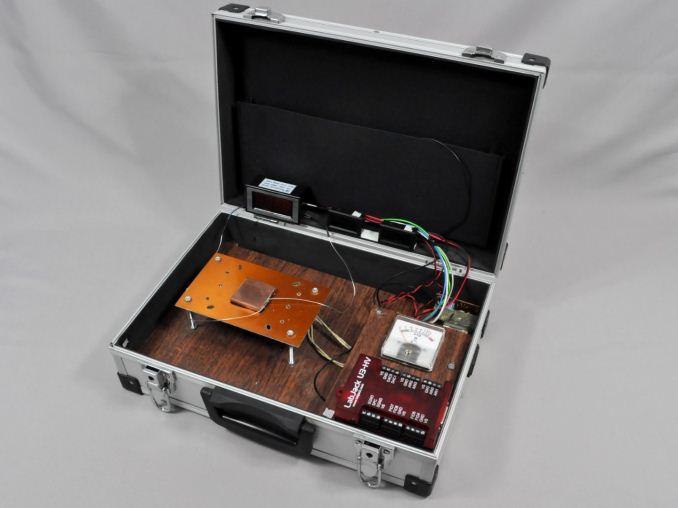
Appropriate thermal testing requires the creation of a proper testing station and the use of laboratory-grade equipment. Therefore, we created a thermal testing platform with a fully controllable thermal energy source that may be used to test any kind of cooler, regardless of its design and or compatibility. The thermal cartridge inside the core of our testing station can have its power adjusted between 60 W and 340 W, in 2 W increments (and it never throttles). Furthermore, monitoring and logging of the testing process via software minimizes the possibility of human errors during testing. A multifunction data acquisition module (DAQ) is responsible for the automatic or the manual control of the testing equipment, the acquisition of the ambient and the in-core temperatures via PT100 sensors, the logging of the test results and the mathematical extraction of performance figures.
Finally, as noise measurements are a bit tricky, their measurement is being performed manually. Fans can have significant variations in speed from their rated values, thus their actual speed during the thermal testing is being recorded via a laser tachometer. The fans (and pumps, when applicable) are being powered via an adjustable, fanless desktop DC power supply and noise measurements are being taken 1 meter away from the cooler, in a straight line ahead from its fan engine. At this point we should also note that the Decibel scale is logarithmic, which means that roughly every 3 dB(A) the sound pressure doubles. Therefore, the difference of sound pressure between 30 dB(A) and 60 dB(A) is not "twice as much" but nearly a thousand times greater. The table below should help you cross-reference our test results with real-life situations.
The noise floor of our recording equipment is 30.2-30.4 dB(A), which represents a medium-sized room without any active noise sources. All of our acoustic testing takes place during night hours, minimizing the possibility of external disruptions.
| <35dB(A) | Virtually inaudible |
| 35-38dB(A) | Very quiet (whisper-slight humming) |
| 38-40dB(A) | Quiet (relatively comfortable - humming) |
| 40-44dB(A) | Normal (humming noise, above comfortable for a large % of users) |
| 44-47dB(A)* | Loud* (strong aerodynamic noise) |
| 47-50dB(A) | Very loud (strong whining noise) |
| 50-54dB(A) | Extremely loud (painfully distracting for the vast majority of users) |
| >54dB(A) | Intolerable for home/office use, special applications only. |
*noise levels above this are not suggested for daily use
Testing Results, Maximum Fan Speed
Our maximum speed testing is performed with both the fans and the pump of the kit powered via a 12V DC source. This input voltage should have the pump and fans matching the speed ratings of the manufacturer. As per SilverStone’s specifications, the fans should have a rotational speed of 2200 RPM. According to our tachometer, the speed of the fans is spot-on at 2200 RPM. Furthermore, the speed difference between the six fans we tested was negligible, indicating great manufacturing quality and minimal deviations.
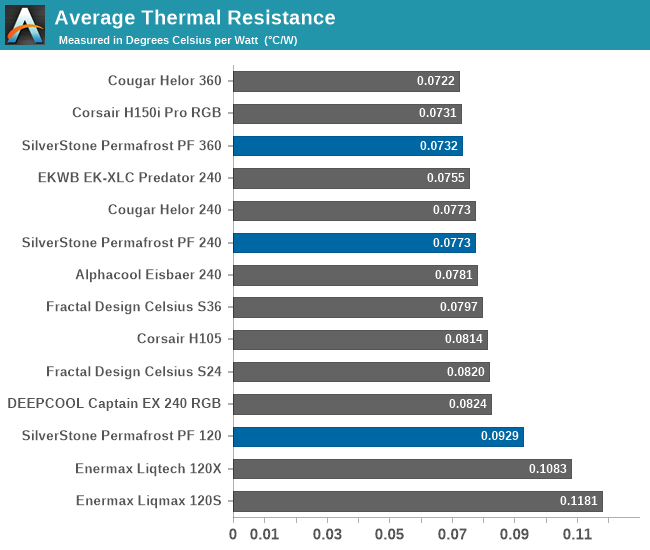

| Core Temperature, Constant Thermal Load (Max Fan Speed) |
A glance at the average thermal performance charts reveals that the new SilverStone Permafrost coolers perform as expected of their size and technology. Their raw performance falls very close to that of similarly sized coolers, outperforming some and losing to others. The average thermal resistance of 0.0732 °C/W that the PF360 achieves is remarkable for any kind of CPU cooler, yet it does not break any records and is overshadowed by the impressive 0.0773 °C/W figure that the PF240 achieved. The smaller PF120 has a substantial performance gap compared to its larger counterparts but does perform well for a single 120 mm AIO cooler.

In terms of acoustics, SilverStone’s engineers did an excellent job. Despite that the fans supplied with the Permafrost coolers are relatively high-speed, the sound pressure levels of all three coolers are comparatively low. As a result, the larger coolers end up outperforming models that use one or even two fewer fans.
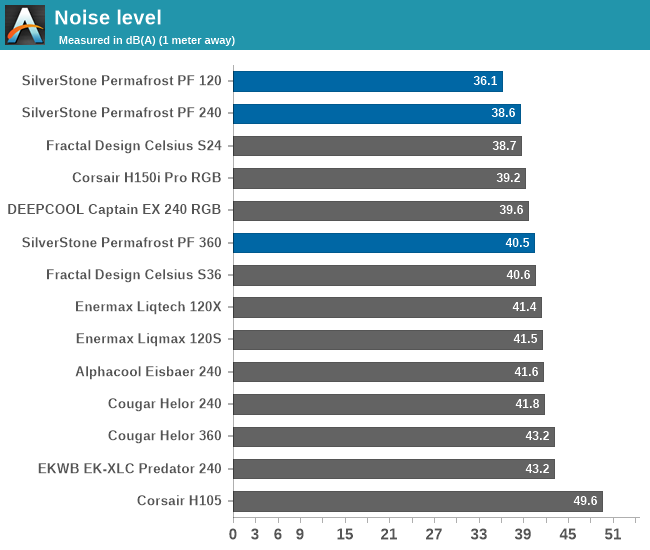
Testing Results, Low Fan Speed
Using a PWM voltage regulator, we reduced the speed of the fans manually down to half their rated speed, which is 1080-1100 RPM. The pump was also connected on the same power source, functioning properly at this low speed setting.

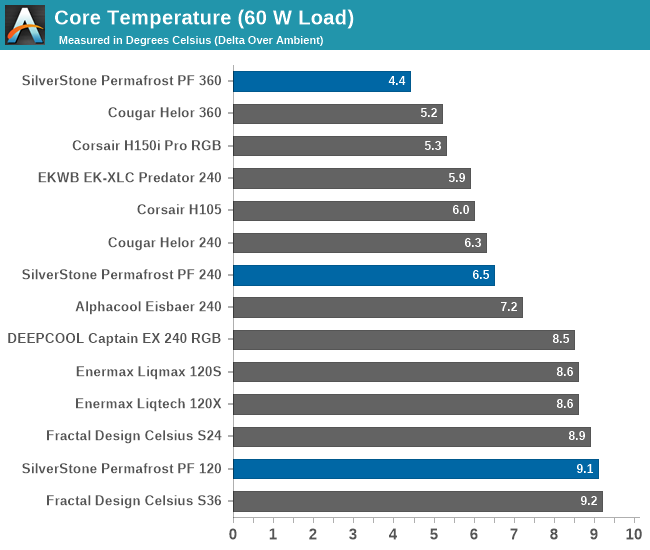
| Core Temperature, Constant Thermal Load (Low Fan Speed) |
All three of SilverStone’s Permafrost coolers perform very well in this test but it is the PF 360 that really stands out, as it managed to outperform virtually every other cooler that we have ever tested. Despite the massive airflow drop, the thermal permittance of the PF 360 rose only up to 0.0821 °C/W. This is especially interesting because of the low noise output that, in combination with the high thermal performance, makes the PF 360 one of the most efficient coolers that we have ever tested.
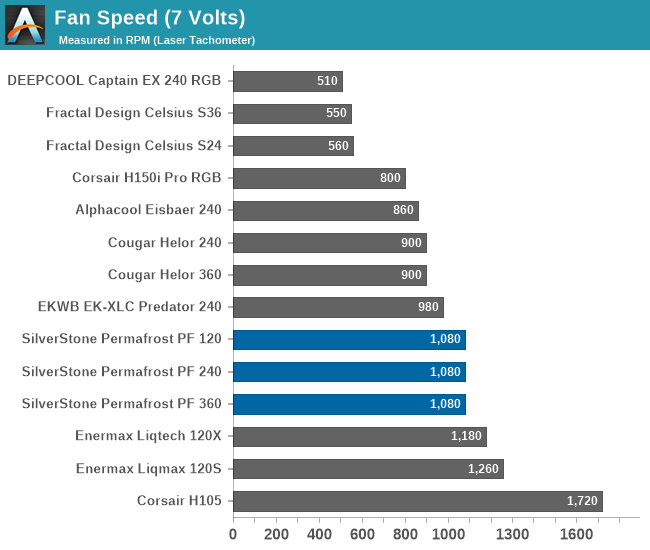
The Permafrost 120 and 240 also do well in this test, although they can win no medals. Their thermal performance figures are comparable to competitive products, some of which were released many months before the Permafrost series hit the store shelves. The acoustic performance of the new Permafrost coolers is a little better than that of many older coolers, making them a little more comfortable to use. This difference, however, is relatively small and most users will definitely neglect it if other factors, such as availability and retail price, come into play.
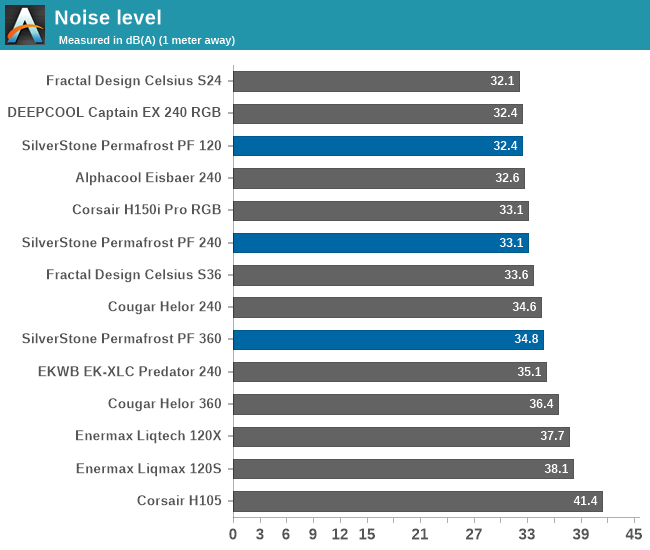
Thermal Resistance VS Sound Pressure Level
During our thermal resistance vs. sound pressure level test, we maintain a steady 100W thermal load and assess the overall performance of the coolers by taking multiple temperature and sound pressure level readings within the operating range of the stock cooling fans. The result is a graph that depicts the absolute thermal resistance of the cooler in comparison to the noise generated. For both the sound pressure level and absolute thermal resistance readings, lower figures are better.
In these graphs, we can see where SilverStone’s new Permafrost coolers really stand out. Although the PF 240 and PF 360 do not break any thermal performance records directly, it can be seen that they can offer the same level of thermal performance at a significantly lower level of noise. The PF 360 in particular is almost unaffected by the speed of its fans while these spin above 1200 RPM, with any increase in speed resulting in minuscule thermal performance gains, meaning that the massive cooler can retain most of its performance even if its fans are rotating at half speed. The PF 120 is very different compared to its larger siblings, being unable to match them in terms of performance no matter how quickly the single 120 mm fan spins, but it also cannot ever get too loud, maxing just above 36 dB(A) with the fan at maximum speed.
Conclusion
SilverStone released the Permafrost series as competitively priced, quality AIO coolers that also feature RGB lighting. It is apparent that the company’s engineers did not try to make the coolers extravagant in any given way, but to design products that mix solid aesthetics, reliability, and performance, all while remaining reasonably priced.
Overall, the thermal performance of the new Permafrost series is good, although unsurprising for coolers of their size. This was to be expected, as they are using virtually the same tried-and-true radiators that many other manufacturers have been using for many years now, with the design team focusing their efforts on the main block. There is little to be gained by fiddling with the mini pump when limited by the small available power, but SilverStone’s engineers managed to maintain good flow performance while considerably reducing the pump’s noise output.
Each of the three Permafrost coolers seems to have a different performance profile and, thus, targets a different group of users. The PF240 seems to be the most balanced of the three coolers, being reasonably sized and capable of closing near the performance of the PF360 if it has to. The larger PF360 does not really stand out in terms of raw thermal performance but is capable of maintaining that performance even if the airflow drops greatly. Finally, the small PF120 offers acceptable thermal performance and relatively low noise levels in a small, easily handleable package that should fit inside even the smallest of PC cases.
While SilverStone could not make substantial improvements regarding the thermal performance of their AIO coolers, they did manage to get ahead in terms of acoustics. Most of that improvement seems to be coming from the better pump engine and the high quality fan engines. No matter the reason, the Permafrost PF240 and PF360 tend to offer better thermal performance at lower noise levels than many similarly sized, older AIO coolers, which will definitely entice users who enjoy low noise levels.
As for the RGB lighting, its application on the Permafrost coolers is simplistic but effective. The LED lighting is bright enough and the fans glow brilliantly into a dark environment. It is compatible with nearly all current RGB motherboards and can be controlled via the motherboard’s software. For users that do not have a compatible motherboard, the RGB lighting can be effectively programmed via the included controller that includes several fancy and static lighting effects, but the user will have to access the inside of the system for each program/brightness change.
In conclusion, with the release of the Permafrost series, SilverStone brought three very well balanced AIO coolers with RGB support into the market. The three coolers are sensibly priced, with the 240mm model running for $99 and even the largest 360mm model and can be frequently found for $129 – and they're often on sale for less, making them a serious threat to the competition.

